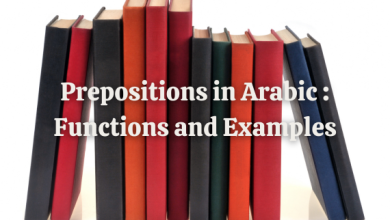Understanding verbs and their conjugation is key to mastering any language, and Arabic is no exception. Verbs are the action words that bring life to our sentences. Imagine trying to describe a story without them—pretty difficult, right? Whether you want to express what you did yesterday, what you’re doing today, or what you’ll do tomorrow, verbs are essential.
Arabic verbs, like a puzzle, have many pieces. Once you learn to fit them together, you’ll unlock a new world of communication. This article will guide you through the types of verbs in Arabic, their conjugation, and how they fit into the broader tapestry of Arabic grammar. Whether you’re a beginner or looking to polish your skills, this guide is designed to be accessible and engaging.
Introduction to Arabic Verbs
Verbs are the backbone of any sentence. They express actions, states, and occurrences. In Arabic, verbs are dynamic and complex, reflecting the language’s rich history and structure. Arabic verbs are often seen as challenging due to their intricate patterns and roots. However, with a little guidance, you can navigate this exciting landscape.
Why are verbs so important? Picture trying to describe your day without using any verbs. It’s like painting without colors—nearly impossible! In Arabic, verbs are not only central to conveying meaning but also carry important grammatical information about time, person, and number.
Types of Verbs in Arabic
Arabic verbs can be categorized into several types based on their structure and meaning. Understanding these types will help you recognize and use them effectively in sentences.
1. Regular Verbs
Regular verbs in Arabic follow a predictable pattern in their conjugation. They don’t have irregularities and are often easier to learn for beginners. For instance, verbs like “كتب” (kataba – to write) follow a straightforward pattern.
2. Irregular Verbs
Irregular verbs, as the name suggests, don’t follow the regular conjugation patterns. These verbs often have unique forms and require memorization. Examples include “كان” (kana – to be) and “أتى” (ataa – to come).
3. Weak Verbs
Weak verbs contain a weak letter (alif, waw, or yaa) in their root. These verbs can be challenging as they change their forms in different tenses and moods. An example is “قال” (qala – to say).
4. Hollow Verbs
Hollow verbs have a weak middle letter. The weak letter can cause the verb to contract in certain tenses. For example, “قام” (qaama – to stand) is a hollow verb.
5. Defective Verbs
Defective verbs end with a weak letter, which often drops in conjugation. The verb “دعا” (da’aa – to call) is defective.
Regular vs. Irregular Verbs
The distinction between regular and irregular verbs in Arabic is similar to English. Regular verbs follow a consistent pattern, while irregular verbs have unique conjugations that must be memorized.
Regular Verbs
Regular verbs maintain their root letters across different forms and tenses. They are predictable and usually straightforward to conjugate. This regularity makes them a great starting point for learners.
Irregular Verbs
Irregular verbs can deviate significantly from standard patterns. They often require special attention and practice to master. While they may seem daunting at first, understanding these verbs can enhance your fluency and comprehension.
Conjugation Basics
Conjugation in Arabic involves altering the verb form to reflect the subject, tense, and mood. The process can be complex, but once you grasp the basics, you’ll find it easier to build sentences accurately.
Subject Pronouns and Conjugation
Arabic verbs change form based on the subject. The verb must agree with the subject in gender and number. For example, the verb “كتب” (kataba – to write) changes to “كتبت” (katabtu) when the subject is “I”.
Tense and Aspect
Arabic verbs are conjugated in three main tenses: past, present, and future. Each tense provides information about the time of the action.
The Root System in Arabic Verbs
Arabic is a root-based language, which means that most words are derived from a three-letter root. Understanding the root system is crucial for mastering Arabic verbs.
Identifying Roots
Roots are the foundation of Arabic words. By identifying the root of a verb, you can often deduce its meaning and related words. For instance, the root “كتب” (k-t-b) relates to writing, leading to words like “مكتوب” (maktuub – written) and “كاتب” (kaatib – writer).
Root Patterns and Meanings
Different root patterns convey different meanings. For example, adding certain prefixes or suffixes can change the verb’s meaning or create related nouns and adjectives.
Past Tense Conjugation
The past tense is one of the simplest tenses to conjugate in Arabic. It typically involves adding suffixes to the root verb to indicate the subject.
Forming the Past Tense
To form the past tense, start with the root verb and add the appropriate suffix based on the subject. For example, “كتب” (kataba – he wrote) becomes “كتبت” (katabtu – I wrote) for the first person singular.
Subject Agreement
Ensure that the verb agrees with the subject in gender and number. This agreement is essential for clear and accurate communication.
Present Tense Conjugation
The present tense in Arabic expresses ongoing or habitual actions. It requires adding prefixes and sometimes suffixes to the root verb.
Forming the Present Tense
To conjugate a verb in the present tense, start with the root and add the appropriate prefixes. For example, “كتب” (kataba – he writes) becomes “أكتب” (aktubu – I write) for the first person singular.
Conjugation Patterns
The present tense has more complex conjugation patterns than the past tense, reflecting the subject’s gender, number, and person.
Future Tense Conjugation
The future tense indicates actions that have not yet occurred. It is formed by adding a particle to the present tense verb.
Using the Future Particle
In Arabic, the future is often indicated by adding “س” (sa) or “سوف” (sawfa) before the present tense verb. For example, “سأكتب” (sa’aktubu – I will write).
Expressing Future Actions
The future tense is essential for discussing plans, intentions, and predictions.
Imperative Verbs
Imperative verbs express commands or requests. They are used to tell someone to do something.
Forming the Imperative
To form the imperative, remove the subject pronoun from the present tense verb. For example, “اكتب” (uktub – write!).
Politeness in Commands
Arabic often uses specific phrases to soften commands and make them more polite, especially when addressing elders or strangers.
Verb Forms and Patterns
Arabic verbs have various forms and patterns that modify their meaning and function.
Derived Verb Forms
Arabic verbs can be modified to create different forms, each with a specific meaning. For example, the verb “كتب” (kataba – to write) can be transformed into “كاتب” (kaatib – writer) and “كتابة” (kitaabah – writing).
Patterns and Their Uses
Each verb form has a unique pattern and is used in specific contexts. Understanding these forms can significantly expand your vocabulary and comprehension.
Common Mistakes and How to Avoid Them
Learning Arabic verbs can be challenging, and mistakes are part of the process. Here are some common errors and tips to avoid them:
Confusing Tenses
One common mistake is mixing up tenses. Ensure you use the correct tense to convey the intended meaning. Practice conjugating verbs in different tenses to build confidence.
Ignoring Subject-Verb Agreement
Ensure that verbs agree with their subjects in gender and number. Pay attention to the pronouns and their corresponding verb forms.
Misusing Irregular Verbs
Irregular verbs can be tricky. Memorize their forms and practice using them in sentences.
Practice Exercises for Mastery
Practice is essential for mastering Arabic verbs. Here are some exercises to help you reinforce your understanding:
Conjugation Drills
Conjugate verbs in different tenses and forms. Start with regular verbs and gradually work your way up to irregular verbs.
Sentence Construction
Create sentences using different verb forms and tenses. This exercise will help you understand how verbs function in context.
Listening and Speaking
Engage in listening and speaking exercises. Listen to native speakers and try to mimic their verb usage.
Conclusion
Understanding verbs and their conjugation is a crucial step in mastering Arabic. Verbs are the building blocks of communication, allowing you to express actions, emotions, and ideas. By exploring the types of verbs in Arabic and practicing their conjugation, you’ll gain confidence and fluency in the language.
Remember, learning a language is a journey, and practice is key. With dedication and patience, you’ll be able to navigate the complexities of Arabic verbs and enjoy the richness of the language.
Frequently Asked Questions (FAQs)
What are the types of verbs in Arabic?
The types of verbs in Arabic include regular, irregular, weak, hollow, and defective verbs.
How do you conjugate regular verbs in Arabic?
Regular verbs follow predictable patterns based on subject, tense, and mood, making them easier to conjugate.
What is the root system in Arabic verbs?
The root system involves three-letter roots that form the basis of most Arabic words, providing clues to their meanings.
How do you form the imperative in Arabic?
To form the imperative, remove the subject pronoun from the present tense verb and use the command form.
Why is subject-verb agreement important in Arabic?
Subject-verb agreement ensures clarity and accuracy in communication, reflecting the subject’s gender, number, and person.
Stay tuned and subscribe to our channel.




